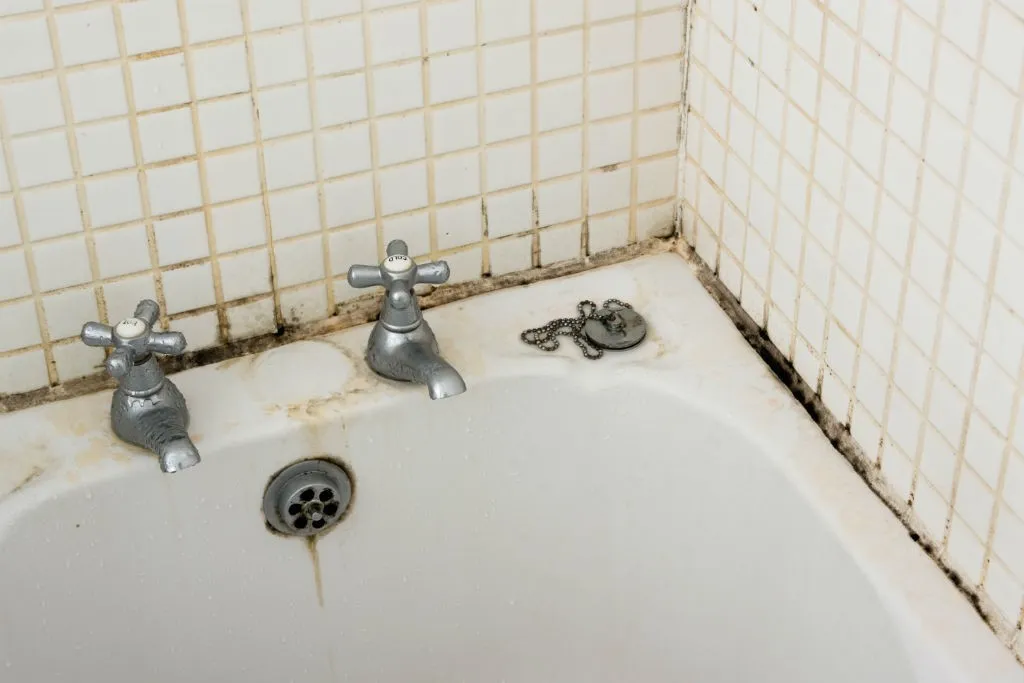Mold can be found in many homes, and it usually appears as small discolorations or spots on ceilings and walls. This type of fungus grows in damp environments, particularly in the kitchen and bathroom.
Avoiding high humidity and moisture levels is the most effective way to prevent mold in your home. Please continue reading to learn how mold develops and the conditions that can promote its growth in your bathroom.
Mold can grow in your bathroom due to the shower. For more information on how to prevent bathroom mold, please see the resources below.
The Basics of Mold Growth
Molds reproduce by fungal seeds that are found both indoors and outside. Spores travel quickly through the air and are nearly invisible. Mold can start to appear in two days after they attach themselves to a surface that is conducive to their growth.
The spores are more common outside, but they can also enter buildings and homes through windows, doors, and HVAC systems. The spores can attach themselves to shoes and clothing, allowing them to enter the house.
When the following conditions are present, spores can form molds on any surface.
- Moisture
- Oxygen
- Food Source
- Humidity
You can remove mold from small areas by yourself. If mold has taken over large areas of your home, you should hire a professional. Watch this video to learn how mold removal services can address fungus growth.
10 Reasons Why Mold May Grow in Your Bathroom
Mold spores thrive in bathrooms with moisture, heat, and humidity. Be on the lookout for these signs in your bathroom that may make it more susceptible to mold growth:
Visible Leaks
Mold is caused by moisture buildup. Spores require oxygen, which is found in water. Moisture is retained when you wash your face or hands on the sink or, worse if there’s a leaky tap. This encourages mold growth.
Wallpaper and Wood Materials
Fungi feed on organic material to grow. Some building materials and decors are designed to encourage mold growth. Mold growth may be more likely in bathrooms that contain wood, paper, and fabric products.
Before you embark on your next Bathroom Remodeling Project, choose materials that are mold-resistant, such as glass for your frameless shower enclosures or doors.
Pipe Leaks
Leaks can sometimes be difficult to detect, especially if they are hidden underground or in the space between bathroom walls. Hidden leaks can still be a breeding ground for mold because they drip continuously, increasing the moisture in the area.
Fabric Mats
Many homes have bath mats that are ultra-absorbent to ensure water does not pool on the floor. This material can harbor moisture when it is partially or fully soaked in water. Spores will attach to this material. Mold will continue to spread and grow with enough moisture and oxygen. You can get the same problem if you leave damp towels on your bathroom flooring.
If mold appears on fabrics or other organic surfaces, it is important to remove it quickly. You may do it yourself if you can or contact mold remediation services, such as https://rescueclean911.com/, or other professionals near you to get the work done.
Long, warm baths
In addition to humid and warm environments, spores can also grow quickly in these conditions. In your bathroom, a hot shower can increase the temperature, trapping steam. It can cause condensation in homes that lack proper insulation. Condensation is a moisture source that promotes fungal growth.
Poor Ventilation
Mold can form in bathrooms due to poor ventilation, which traps moisture. Moisture can settle on surfaces in the bathroom, such as tiles, cabinets, and fixtures, if air circulation is poor. Mold can grow on these surfaces when spores have the opportunity to attach.
Insulation Below Standard
Insulation can help prevent mold growth by regulating moisture and temperature. Warm air can be trapped in walls, between ceiling and roof, or on other surfaces if there is not enough insulation. Condensation occurs when warm air is in contact with the cold outside air. This leaves you with a permanently damp feeling. When your bathroom insulation is substandard, it can lead to high levels of oxygen and moisture, which encourage mold growth.
Failure to wipe surfaces regularly
The bathroom is always damp because it has many fixtures that use water. Moisture is the main cause of mold growth, so it should be kept at a minimum. Water can collect in corners, on toilets, sinks, and floors if you do not wipe them frequently. A moist or damp surface can be a breeding ground for fungi.
Damaged Grouts
Grout is used to fill in gaps between tiles and hold them together. If the grout between your bathroom tiles cracks, moisture will seep in and remain there. This allows the spores in that area to grow and stick to it.
Leaking Bathroom Roof
Roof damage can occur for many different reasons. No matter what the reason, a damaged roof can lead to excess moisture that leads to mold growth. If water, humidity, and moisture enter your bathroom through a damaged roof, it is more susceptible to fungi.
Final Thoughts
The relative dampness and humidity of your bathroom make it the most susceptible to mold growth. In order to find ways to prevent the growth of mold, it is important to understand what conditions encourage fungal development, such as moisture, humidity, and food sources.
Mold growth can be reduced if you eliminate or reduce these factors in your bathroom.

